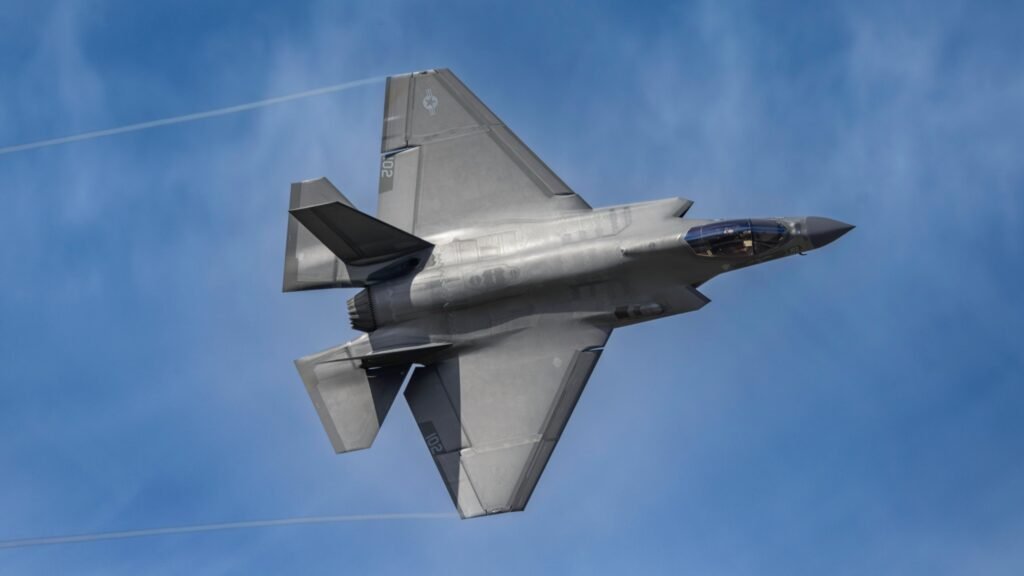Lockheed’s hypersonic projects are redefining the future of defense with billion-dollar tech leaps.
🚀 Inside Lockheed’s Hypersonic Projects: Billions in Future Defense
The global defense race is speeding up—literally. At the heart of this rapid acceleration lies Lockheed Martin, a company betting billions on hypersonic technology that could change the face of warfare forever.
Let’s take an in-depth look at Lockheed’s hypersonic projects, why they matter, and how they’re set to redefine defense strategy worldwide.
🔍 What Are Hypersonic Weapons, and Why Do They Matter?
Hypersonic weapons are missiles and aircraft capable of flying at speeds over Mach 5—five times the speed of sound. To put that into perspective, they can cross entire continents in minutes, making them nearly impossible to intercept with today’s defense systems.
But it’s not just about speed. Hypersonic missiles are highly maneuverable, allowing them to evade radar detection and missile defense shields. This lethal combination is why global powers, including the U.S., China, and Russia, are investing heavily in hypersonic technology.
💰 Lockheed’s Billion-Dollar Hypersonic Investment
Lockheed Martin has emerged as a key player in America’s hypersonic ambitions. With billions in government contracts, they are leading the development of:
➤ AGM-183A ARRW (Air-Launched Rapid Response Weapon):
A hypersonic missile launched from bombers like the B-52, designed to strike targets in record time.
➤ Hypersonic Glide Bodies:
Collaborating with the U.S. Army and Navy, Lockheed is creating glide vehicles that re-enter the Earth’s atmosphere at hypersonic speeds, striking deep into enemy territory.
➤ Scramjet-Powered Missiles:
Lockheed is exploring scramjet engines for sustained hypersonic cruise missiles capable of long-range precision strikes.
🌍 Hypersonic Arms Race: The Global Impact
Lockheed’s hypersonic projects are not happening in a vacuum. Competitors like China and Russia have already fielded hypersonic weapons. The U.S. is working to catch up—and surpass—its rivals.
This arms race is about much more than military might. It’s about maintaining global influence, protecting critical infrastructure, and deterring future conflicts. Hypersonic weapons could become the crown jewel of 21st-century military strategy.
🔧 Challenges Lockheed Must Overcome
Despite progress, Lockheed faces significant technical and strategic hurdles:
- Thermal Protection: Hypersonic flight generates intense heat; designing materials that can withstand this is a huge challenge.
- Guidance Systems: Maintaining precision at hypersonic speeds is still a work in progress.
- Cost Management: With development costs skyrocketing, budget overruns could become a concern for both Lockheed and the Pentagon.
Yet, Lockheed’s decades of aerospace experience give it a clear advantage in navigating these obstacles.
The Future of Defense: Lockheed’s Hypersonic Vision

Lockheed Martin isn’t just building weapons; it’s shaping the future battlefield. Imagine a world where hypersonic strikes neutralize threats before conventional forces even deploy. Where speed, not size, defines military power.
Future defense budgets are likely to prioritize hypersonic development, integrated missile defense systems, and AI-powered targeting—all areas where Lockheed is positioning itself strongly.
💼 Investment Angle: What This Means for Business & Finance

For investors and financial analysts, Lockheed’s hypersonic push represents both risk and opportunity. Hypersonic contracts are lucrative but come with high R&D costs. Defense spending, particularly in hypersonics, is expected to climb sharply over the next decade.
Companies in Lockheed’s supply chain—from aerospace manufacturers to AI guidance system startups—stand to benefit from this growth.
If you’re tracking defense stocks, Lockheed Martin (LMT) remains a critical player to watch as hypersonics transition from prototype to battlefield reality.
🔗 Suggested Internal Links (for your website):
- [The Future of Military AI: Beyond the Battlefield]
- [Top Aerospace Stocks to Watch in 2025]
- [US Defense Spending: What’s Driving the Surge?]
Disclaimer:
This blog is intended for informational and educational purposes only. The views expressed are personal opinions or general insights, not professional or legal advice. Readers should do their own research or consult relevant professionals before taking action based on this content.
#LockheedMartin #HypersonicWeapons #FutureDefense #DefenseTech #MilitaryInnovation #AerospaceEngineering #TechInvestment #DefenseIndustry #NextGenWeapons #GlobalSecurity #DefenseFinanceCarrerbook#Anslation #InnovationInDefense #FutureWarfare #CuttingEdgeTech #BillionDollarProjects

